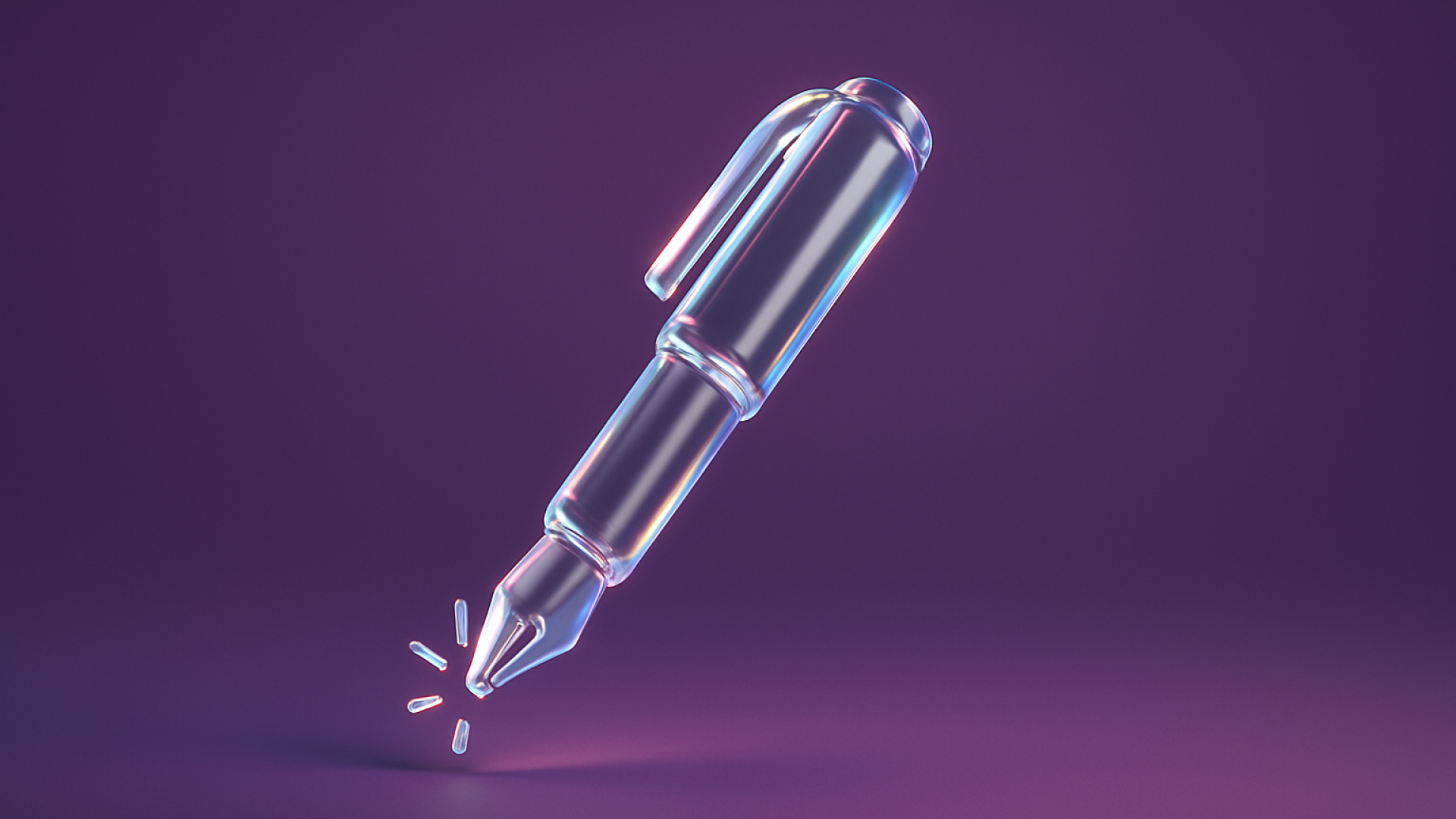AI is transforming how businesses handle data, offering unprecedented insights and automation. But with this power comes a fundamental challenge—how to leverage AI’s potential while safeguarding privacy, ensuring compliance, and maintaining trust.
Organizations face increasing pressure to manage vast amounts of sensitive data, navigate complex regulations, and mitigate security risks. Without a strategic approach, AI-driven systems can expose vulnerabilities, amplify biases, and compromise user trust. The key lies in integrating privacy-first AI frameworks that prioritize data protection without stifling innovation.
This guide explores the essential strategies for enhancing data privacy with AI, from privacy-by-design principles and federated learning to differential privacy and secure AI infrastructures. Learn how to build AI systems that are both powerful and responsible—protecting sensitive data while driving measurable business value.
Enhancing Data Privacy with AI in Enterprises
AI applications demand vast amounts of data for training and decision-making. And that data may contain sensitive personal information. For enterprises, data privacy with AI is a fundamental responsibility for customers and stakeholders.
The sheer volume of data poses challenges for privacy protection. Only well-thought strategies and technologies can strike a perfect balance of solving these challenges for organizations while extracting maximum value from their data.
Bridging the Gap Between Innovation and Privacy
Innovation and privacy often seem contradicting. It’s on the CEOs, CIOs, and CMOs to navigate their organizations through this contradiction, focusing on implementing ethical AI solutions that balance innovation with privacy. The rapid evolution of AI technology necessitates regulatory frameworks to safeguard privacy while promoting innovation.
In sectors like healthcare, where the potential for AI to transform patient care is huge, it’s a task to operate within strict privacy constraints.
Key Strategies on How to Enhance Data Privacy with AI
Let’s look at some of the approaches to address these challenges:
- Privacy by Design: Embed privacy into AI systems from the get-go
- Ethical Data Governance: Establish clear frameworks to collect data and its use, including ethical AI practices when monetizing AI models and proprietary data
- Privacy-Preserving Technologies: Techniques like federated learning, differential privacy, homomorphic encryption, advanced features of an API gateway, robust API authentication methods, and API security best practices
- Data Security: AI technologies that rely on large data sets introduce vulnerabilities, making them attractive targets for cyber threats. These risks can lead to data breaches and privacy violations.
- Algorithmic Fairness: Ensure AI systems don’t perpetuate bias while maintaining privacy
- Transparency and Explainability: Create AI systems whose decisions can be understood, enhancing decision-making with AI, without compromising sensitive data
Balancing AI Innovation and Data Privacy for Competitive Advantage
Artificial intelligence-driven innovation is reshaping industries, but maintaining robust data privacy while scaling AI capabilities remains one of the most significant challenges for organizations. Striking this balance is more than a compliance requirement—it’s a critical factor in maintaining trust, reducing risk, and securing long-term competitive advantage.
Why Data Privacy is a Competitive Differentiator
Organizations that successfully integrate privacy-first AI strategies not only mitigate risk but also build trust and credibility with customers, partners, and regulators. Strong data privacy measures create more resilient AI systems, ensuring they remain ethical, transparent, and aligned with business objectives. Failing to prioritize privacy can have far-reaching consequences.
The Risks of Neglecting AI Data Privacy
Compromising data privacy in pursuit of rapid AI innovation can lead to:
- Data Breaches: Loss of sensitive information, resulting in reputational damage and legal consequences.
- Algorithmic Bias and Discrimination: AI models trained on biased datasets can reinforce systemic inequalities.
- Regulatory Penalties: Non-compliance with evolving privacy laws can result in substantial financial penalties and legal action.
- Loss of Customer Trust: Mishandling data erodes confidence, making it harder to retain customers and attract new ones. Implementing customer retention AI that emphasizes data privacy can help rebuild customer trust.
- Data Processing Challenges: Advanced AI capabilities in data processing enable predictive analytics and pattern recognition, but also raise significant privacy challenges associated with handling sensitive personal information.
According to research on AI privacy risks, a lack of transparency damages trust and creates long-term repetitional harm. Businesses that fail to establish clear privacy safeguards risk falling behind competitors who embed ethical AI practices from the outset.
Navigating AI Privacy Regulations and Business Ethics
To implement AI responsibly, organizations must navigate four critical factors:
- Regulatory Compliance: Maintain up-to-date privacy policies, ensure AI explainability, and meet global legal standards.
- Impact on People: AI systems with significant human impact—such as healthcare and finance—require maximum AI transparency.
- Exposure Considerations: The broader the AI system’s reach, the greater the need for robust data governance and ethical safeguards.
- Data Quality: Training AI on biased or incomplete data can create systemic issues, reinforcing discrimination and inaccuracies.
By embedding privacy-by-design principles, ethical data governance, and transparency frameworks into AI systems, businesses can achieve sustainable AI innovation while protecting data integrity and maintaining stakeholder trust.
Technical Deep-Dive into How to Enhance Data Privacy with AI Methods
Differential Privacy: Adding Noise to Protect Individual Privacy
Differential privacy introduces carefully calibrated randomness into data analysis processes. By adding statistical noise, we can mask the contribution of any individual data point while enabling aggregate analysis.
Implementing differential privacy requires careful consideration of the privacy-utility tradeoff. More noise provides stronger privacy guarantees but potentially reduces analytical accuracy.
Federated Learning: Training Models Across Decentralized Devices
In federated learning:
- The model is sent to multiple decentralized devices or servers
- Each device trains the model using only its local data
- Only model updates (not raw data) are sent back to a central server
- These updates are aggregated to improve the global model
This approach significantly enhances data privacy as the sensitive information never leaves its source. In fields like healthcare and finance, where privacy concerns often restrict data sharing, ethical data governance becomes crucial.
Homomorphic Encryption: Computing on Encrypted Data
This cryptographic technique allows computations to be performed directly on encrypted data without requiring decryption first. Sensitive data can remain encrypted throughout the entire machine-learning pipeline while still delivering useful results.
Modern tools like the Web Crypto API facilitate encryption and secure computations in web applications.
The main limitation of homomorphic encryption has traditionally been its computational intensity. As computing power becomes more accessible, this technology is becoming increasingly viable.
Privacy can’t be an afterthought in AI development—it must be built into the system from the ground up. Privacy by Design (PbD) ensures that AI solutions embed privacy protections from the start, minimizing risk and strengthening compliance with evolving regulations. By integrating privacy-first principles into AI architectures, organizations can balance innovation with responsible data stewardship.
Key Principles of Privacy by Design
The Privacy by Design framework consists of seven foundational principles that guide AI system development:
- Proactive, not reactive – Anticipate and prevent privacy risks before they arise.
- Privacy as the default setting – Users shouldn’t have to take extra steps to protect their data.
- Privacy embedded into design – Integrate privacy protections directly into AI systems, not as add-ons.
- Full functionality – Maintain privacy without compromising system performance or usability.
- End-to-end security – Ensure data protection throughout the entire AI lifecycle.
- Visibility and transparency – Clearly communicate how data is collected, used, and protected.
- Respect for user privacy – Prioritize user control and consent in all AI-driven interactions.
Architectures like the Backend-for-Frontend (BFF) authentication model enhance security by tailoring backend services to specific frontend needs, minimizing exposure, and improving privacy protection. In line with these principles, ISO 31700-1:2023 established a standardized framework for embedding privacy across both technical and organizational AI strategies.
Additionally, distributed architectures such as federated gateways allow organizations to process data closer to its source, reducing the need for centralized storage and lowering privacy risks.
Data Minimization and Access Controls: Reducing Risk at Scale
A core tenet of privacy-by-design AI systems is data minimization, ensuring that only essential information is collected and processed. This approach rests on three key principles:
- Adequacy – Collect only the data necessary for a specific purpose.
- Relevance – Ensure the data directly relates to the processing objectives.
- Necessity – Process only the minimum data required for functionality.
Access controls further strengthen privacy protections by limiting who can access what data and under what conditions. To safeguard sensitive information:
- Implement API rate-limiting techniques to prevent unauthorized data access.
- Use Role-Based Access Control (RBAC) to restrict permissions based on user roles.
- Monitor RBAC analytics metrics to track access patterns and detect anomalies.
By embedding privacy into AI from the design stage, organizations enhance security and regulatory compliance and build trust with users and stakeholders. AI systems designed with privacy in mind are not only more resilient and scalable but also better aligned with ethical and legal expectations in an increasingly data-driven world.
Navigating Privacy Challenges in AI Implementation
Ensuring data privacy in AI systems is a complex but essential task. Without proper safeguards, AI models can inadvertently expose sensitive information, leading to regulatory, ethical, and reputational risks.
Ubiquitous data collection by AI systems can result in significant societal impacts, including new privacy harms and threats to civil rights, as it enables the inference of sensitive information and potential algorithmic discrimination. Organizations must take a proactive approach to address vulnerabilities while maintaining AI performance, accuracy, and transparency.
Privacy Risks in AI Systems
AI models can be susceptible to privacy attacks that expose sensitive data. Two significant risks include:
- Re-identification Attacks – Even anonymized data can be reverse-engineered to identify individuals when combined with other datasets.
- Model Inversion Attacks – Malicious actors can extract training data from AI models, potentially reconstructing private information.
A real-world example is IBM’s use of nearly a million Flickr photos to train facial recognition software without explicit consent, raising concerns about secondary data usage and ethical AI practices. These risks highlight the need for strong privacy controls from the start.
Effective Strategies for Privacy-Preserving AI
Implementing privacy-first AI requires a combination of security measures and ethical frameworks to minimize risks while maintaining performance and accuracy. Best practices include:
- Data Minimization – Limit the collection and storage of sensitive data to only what is necessary.
- Federated Learning – Train AI models across decentralized data sources without exposing raw data.
- Differential Privacy – Add statistical noise to datasets, preventing the identification of individual data points.
- Robust API Security – Use API rate-limiting to prevent excessive data requests and reduce exposure risks.
Encouragingly, a Harvard Business Review study found that 70% of the time, there is no tradeoff between accuracy and explainability when privacy-preserving AI models are trained on well-structured datasets. This reinforces that transparency and performance can coexist when AI is designed thoughtfully.
Overcoming Implementation Barriers
Deploying AI with strong privacy protections requires structured frameworks and continuous oversight. Organizations can reduce implementation hurdles by:
- Enforcing Role-Based Access Controls (RBAC) to limit data access.
- Implementing real-time monitoring to detect privacy breaches before they escalate.
- Following established frameworks like Google’s Secure AI Framework (SAIF) for responsible AI development.
- Validating and sanitizing data throughout the AI lifecycle to prevent contamination and bias.
AI privacy challenges aren’t insurmountable, but they require intentional design, continuous adaptation, and strategic governance. Organizations that invest in robust, privacy-first AI systems will not only reduce risk but also build trust, ensure compliance, and drive sustainable innovation.
The Executive Role in Building a Privacy-First Culture
AI-driven organizations don’t just adopt privacy policies—they embed privacy into their core business strategy. Leadership plays a pivotal role in shaping a culture where data responsibility, ethical AI practices, and regulatory compliance are standard, not afterthoughts. When executives prioritize privacy, they send a clear message: protecting data isn’t just a legal obligation—it’s a fundamental business value.
How Leaders Can Drive Privacy Accountability
Effective leadership fosters a privacy-conscious culture by:
- Establishing company-wide data responsibility – Ensure privacy is integrated into AI development, decision-making, and daily operations.
- Encouraging open dialogue on data practices – Transparency around AI systems, data collection, and usage builds trust with employees and stakeholders.
- Empowering employees to voice privacy concerns – Equip teams with the training and resources to identify and mitigate data risks.
- Proactively adapting to evolving regulations – Stay ahead of compliance requirements by aligning AI strategies with global privacy laws.
Privacy leadership goes beyond policy enforcement—it’s about creating a culture of accountability, where ethical AI practices and responsible data handling are woven into the fabric of the organization. Companies that champion privacy at the executive level will not only reduce risk but also strengthen customer trust, regulatory compliance, and long-term AI success.
Future-Proofing AI Privacy: Staying Ahead in a Rapidly Changing Landscape
AI-driven organizations must do more than comply with privacy regulations—they must anticipate changes, embed privacy into AI from the ground up, and continuously evolve their strategies. Privacy isn’t static; it requires ongoing monitoring, proactive governance, and a commitment to ethical AI development.
Keeping Pace with Global Privacy Regulations
Privacy laws worldwide are constantly evolving, and organizations must stay agile to remain compliant. Some of the most influential frameworks include:
- GDPR (European Union) – Sets the global benchmark for data protection and user rights.
- CCPA (California, U.S.) – Empowers consumers with greater control over their personal data.
- PDPL (Saudi Arabia) – Emphasizes data minimization and security to protect user privacy.
- PIPEDA (Canada) – Takes a principles-based approach to balance data protection with business needs.
With regulations frequently updated, businesses must implement systematic tracking processes to ensure ongoing compliance and avoid legal and reputational risks.
Going Beyond Compliance: Innovating for Competitive Advantage
For industry leaders, compliance is just the baseline—true differentiation comes from proactively enhancing AI privacy practices. Organizations that prioritize:
- Privacy-by-design frameworks
- Data minimization principles
- Transparent AI models
- Emerging technologies like quantum computing
…gain a competitive edge by building trust, reducing risk, and ensuring long-term AI sustainability. Future-proofing privacy isn’t just about avoiding penalties—it’s about positioning AI systems to be resilient, scalable, and ethically sound.
Continuous Monitoring and Privacy Audits
Privacy protection isn’t a one-time effort—it’s a continuous process. Organizations must implement:
- Regular privacy audits to identify vulnerabilities.
- Proactive updates to data handling processes as technology and regulations evolve.
- Transparency reports to build trust with customers and stakeholders.
- Ongoing AI system assessments to ensure fairness, accountability, and security.
- Active engagement with global privacy initiatives to stay ahead of regulatory trends.
The future of AI privacy belongs to organizations that treat it as a strategic priority, not just a compliance requirement. By embedding privacy into AI at every stage, businesses can unlock innovation without compromising security, ethics, or trust.
Privacy-First AI: A Strategic Imperative for Innovation and Trust
AI is transforming industries at an unprecedented pace, but without a strong privacy foundation, its risks can outweigh its benefits. Organizations that embed privacy into AI from the start—rather than treating it as an afterthought—will be the ones that lead with confidence, build trust, and maintain a competitive edge.
Embedding Privacy into AI from Day One
To balance innovation with security, businesses must integrate Privacy by Design principles across the entire Software Development Life Cycle. Adopting a “shift-left” approach, as outlined in TrustArc’s Privacy Management Accountability Framework, ensures that privacy becomes a proactive strategy rather than a reactive fix. Companies that operationalize privacy from the ground up create AI systems that are both scalable and secure.
Privacy as a Competitive Differentiator
Privacy isn’t just a compliance requirement—it’s a trust multiplier. Organizations that prioritize ethical AI practices and robust data protection build stronger relationships with customers, employees, and stakeholders. By implementing clear governance frameworks and fostering transparency, companies can differentiate themselves in a market where trust is becoming a key driver of success.
Future-Proofing AI with Strong Privacy Foundations
The future of AI belongs to organizations that treat privacy as a core design principle. By establishing governance frameworks, maintaining transparency, and implementing privacy-enhancing strategies, businesses can ensure their AI initiatives remain ethical, compliant, and resilient in an evolving regulatory landscape.
By integrating privacy-first AI strategies, such as implementing an AI chatbot solution, organizations can reap the benefits of AI while maintaining data privacy and trust.
Tribe AI helps organizations build AI systems that prioritize privacy without compromising innovation. Our AI specialists bring deep expertise in privacy-first AI development, governance, and compliance, ensuring that your AI solutions are not only powerful and efficient but also trusted and future-ready.
Ready to build AI that’s both transformative and responsible? Join Tribe AI and let's make it happen.













